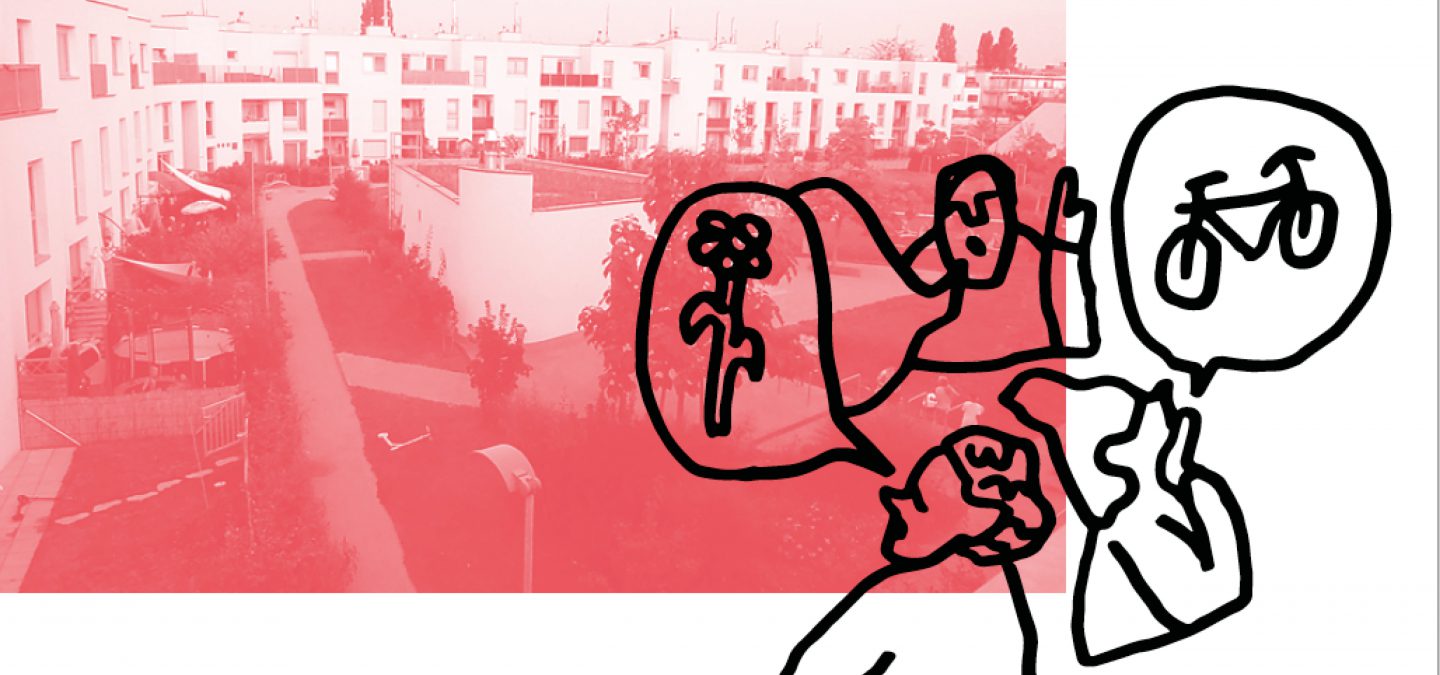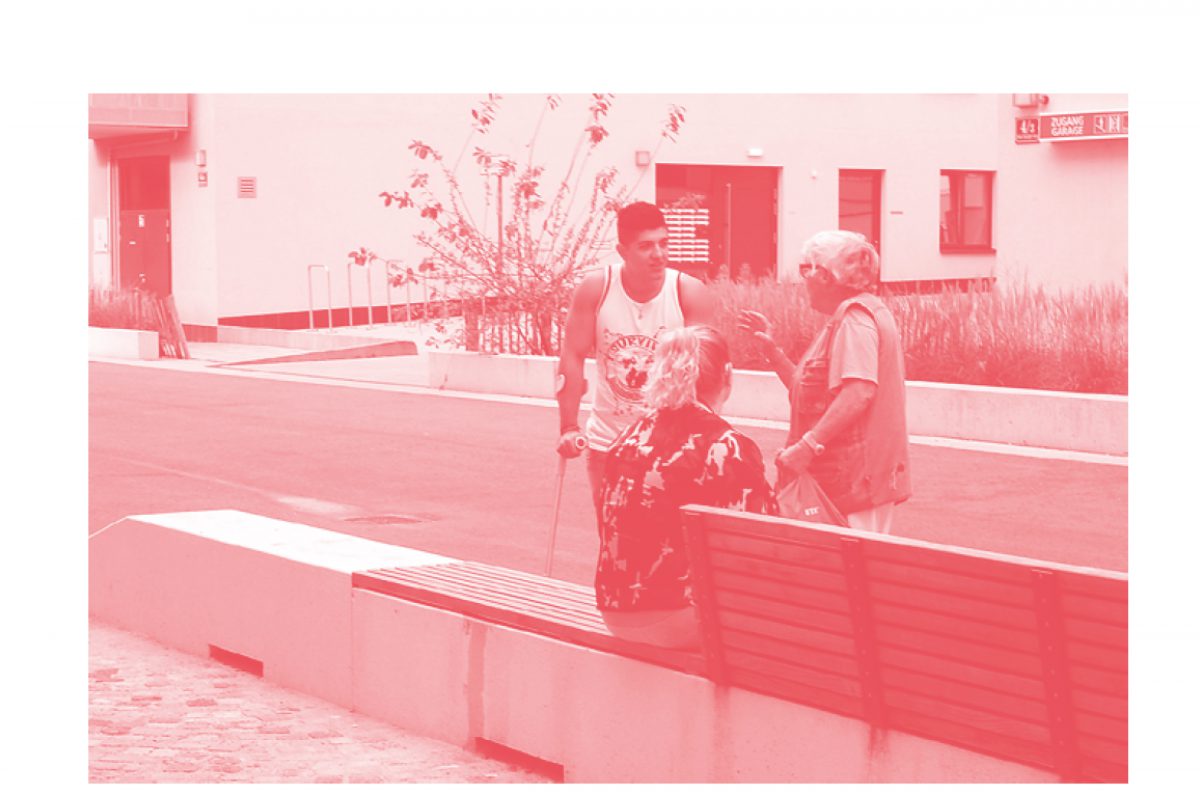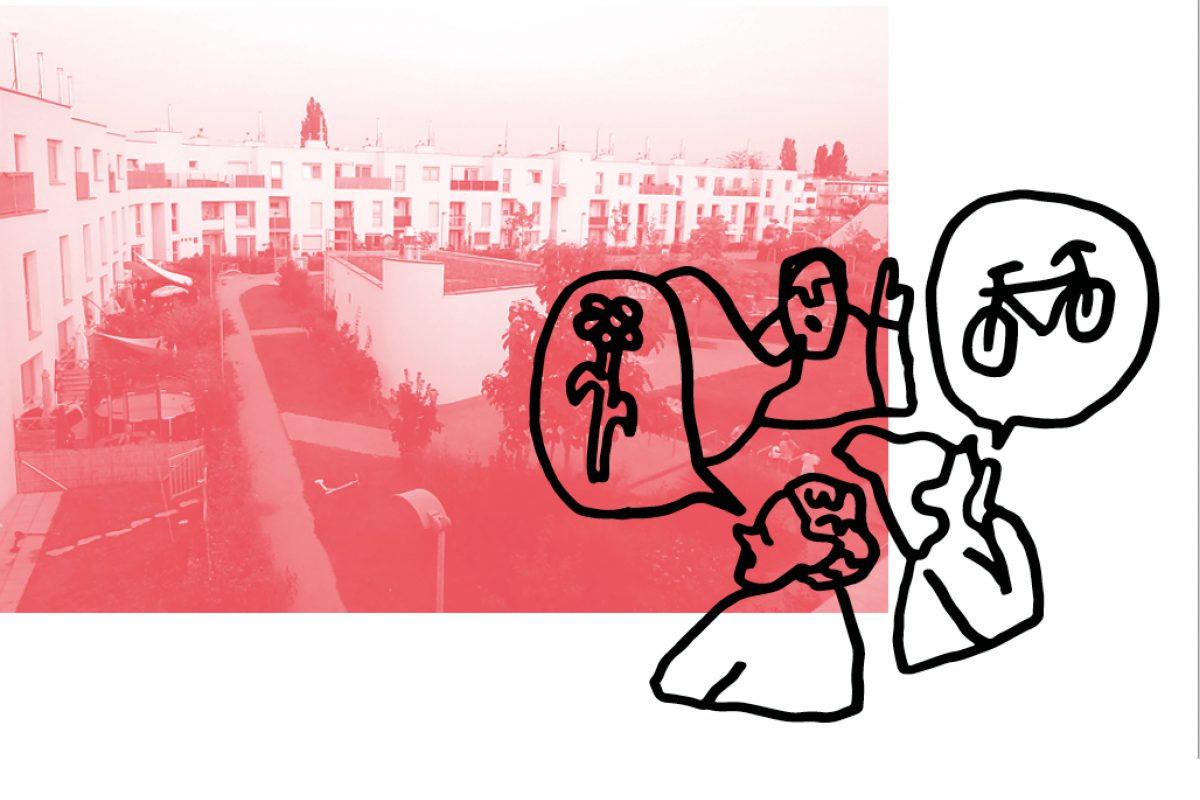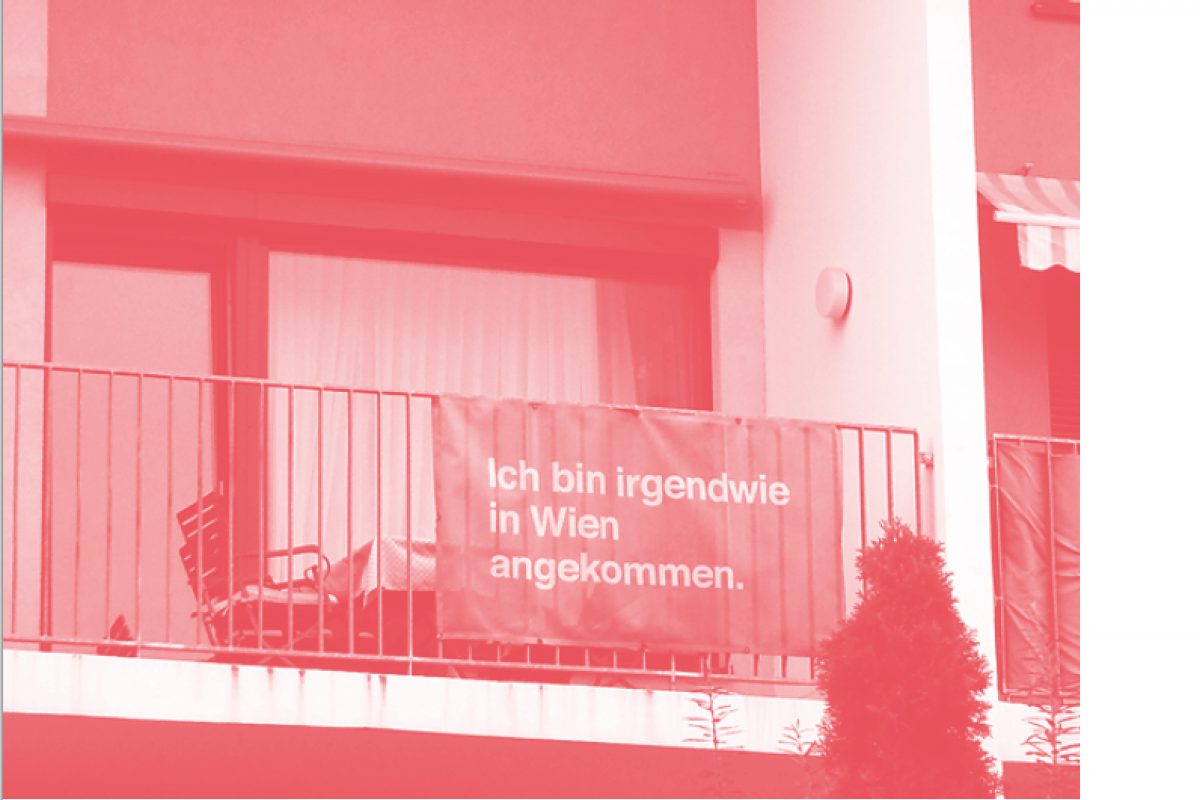
Keep up with our latest news and projects!

Migration and growing cities lead to a considerable increase in ‘mixed population’ in terms of migration history. The still growing stock of good quality publicly funded housing in Vienna is a main place where ‘good coexistence’ is put to the test.
This study examines housing estates built by Sozialbau AG (an important limited-profit housing association) over the last sixteen years in Vienna. To what extent can we speak of ‘good coexistence’ of residents and what preconditions have been decisive in achieving it? It is a question of whether residents feel integrated,whether they share in the social life of the housing estates and if it commensurate with their opportunities and wishes. These questions are relevant because an ethnically heterogeneous mix of residents has become the norm in housing estates built by limited-profit housing associations — which many would like to assume does not exactly make coexistence easy.
‘Good coexistence’ means that residents treat one another with mutual respect and recognition of each other’s characteristics despite their differences regarding social status, ethnic origin, age, gender and lifestyle. It also means that all residents, including young families, elderly citizens, couples and single people, teenagers, children and disabled individuals should be involved in the social life of housing estates.
The results paint the following overall picture of coexistence in the housing estates constructed by the Sozialbau limited-profit housing association since 2000.
Can life in the estates be described as ‘good coexistence’ between Austrians and migrants? Yes, it probably can. Overall results are positive, even though, as in some areas, the outcome was not as good as was expected and notwithstanding some negative evaluations about specific aspects. Yes, when the results are differentiated and overlaid residents are not always unambiguous: they may be irritated by something but nevertheless they are proud of their housing estate, identify with it and would almost unconditionally recommend it along with the association that manages and owns it. And ultimately statements are always influenced by the life situation of those answering.
‘Good coexistence’ is a wish that in the first instance has nothing to do with ethnicity but is a matter of general everyday life. And it is the ‘small’ everyday things that make for ‘good coexistence’, such as: closer contact with neighbours or settling a dispute in the building. However, there are special challenges to living in ethnically-diverse housing estates.

An overview of the survey results, namely of the different ratings, shows significant differences between each group of issues: questions related to the structure of the housing and to the organisational facilities (such as: satisfaction with the infrastructure, with the performance of the housing management and the caretakers, with services, with the area) receive impressively high ratings, often above seven out of ten, sometimes even higher. (Certain differences are apparent, to put it bluntly: how and where one lives is more decisive here than who one is). So quality matters.

General life together is seen less positively, but is nevertheless satisfying for the majority. (Those with a migration history are the most satisfied.) Obviously, there is space for improvement.
Polarisation becomes visible in questions of interethnic coexistence. There are still more people with a positive attitude than those reacting negatively, but the difference is relatively small. (The latter also includes a ‘hard core’ group of residents who react negatively to almost all questions concerning interethnic issues.) Thus, it is evident that interethnic coexistence is a process of learning that requires support.
Among those interviewed, in many questions of coexistence, there are the undecided, the wavering, and the close-lipped, always at least a fifth and more. Maybe, ‘winning’ them could decisively improve the situation.
In summary: Despite all the positive ratings, especially in terms of building structure and housing management, in too many questions of coexistence, especially interethnic coexistence, groups of similar size are for or against. But there are also many undecided.
Various questions prove sensitive, such as: the level of satisfaction with different ethnicities, or also with the dominance of some, the quest for a balance formula that enables good coexistence, the desire for ‘limits’ or even ‘restrictions’, with around a quarter of respondents not giving a concrete answer. This is a notable result. Acceptance of ethnicities prevailed only slightly. The idea of a fifty-fifty ‘mix’ of Austrians and migrants on housing estates was only appreciated by three out of ten. The attitude of enriching diversity was somewhat more favoured, those with a positive or cautiously positive attitude outweigh those with a negative attitude.
Based on the appraisal described above (high level of satisfaction with the housing and its facilities, good overall life together, but ambiguous positions towards different ethnicities among neighbours), there are several indications of the need for urgent action in this limited-profit housing, namely indications for the management of existing housing estates and the planning of new estates.
For existing housing estates, it is a question of limiting grounds for conflict, mediation and enabling residents’ initiative based on continuous monitoring of life on the housing estates.
In the planning of new housing estates, the approach should be to avoid architectonic elements and spaces which experience shows lead to conflicts.
It is obvious that it is to a far greater extent a question of the “software” of organisational and social measures, than of the “hardware” of the built environment. All this is true on the housing association level and on the local policy level (e.g. conditions for funding, allocation).
For existing housing:
Moderation
Caretakers and housing managers are in many senses intermediaries. A continually moderated exchange of ideas about experience on individual housing estates can help in overcoming difficulties.
Current efforts on all sides towards “more diversity in public and private services” could result in more people of various origins becoming caretakers or working in housing management. Caretakers who themselves have a history of migration can build bridges to other migrants and also to Austrian residents.
There is high approval for the local neighbourhoods of housing estates although individual problems should be recognised. Housing companies should also take up the task of bringing together existing neighbourhoods and ‘newcomers’ in large-scale, inner-city development projects in cooperation with municipal bodies active in the area.
Mediation
The findings on conflicts and conflict solutions show a clear necessity for the increased expansion of mediation. Mediation should not only first be used when there is reason to intervene but also where potential or latent conflicts are smouldering. In particular, the needs of residents going through difficult phases of life — as is frequently the case with single-parents and the elderly – should be actively addressed by low-threshold services.
Self-organisation and dialogue with the housing companies
Local levels of autonomous organisation and forms of communication between residents cannot and should not be set up on a ‘top-down’ basis organised by the housing management. However, they can be promoted through ‘empowerment’ – meaning providing structures such as access to digital information media and spaces for meeting – and by encouraging residents’ independent initiatives.
Desirable dialogue between the companies and the residents could be further improved by decentralised information systems (e.g. wider provision of digital information screens on the estates, with apps as well as with more on-the-spot meetings).
The greater participation desired could be achieved through the development of creative offers to get involved, tenants’ representation as well as in other ways.
The apparent potential of integrated residents who have lived here for some time should be ‘unlocked’ for interethnic understanding. They would be good at communicating the necessity for a ‘give and take’ on all sides.
Places for community
Communal rooms, which are of a particularly high standard in newer subsidised housing, are important for residents, even if they seldom or never use them. From a spatial point of view they are entrées which help to show that housing is more than just an isolated flat but also life in a community.
Monitoring and evaluation
Notwithstanding ongoing documentation work into the housing estates on management and allocation level, it would make sense to maintain a structured monitoring system as a prophylactic measure. A broadening to a mix of indicators and a view of the profiles of different types of housing would provide an early warning system for developments and potential problems. Focused evaluations could then serve as periodic checks on the target concepts of the housing companies.

With new projects:
Good building design
Some points of criticism that were raised – such as disturbance through noise or a lack of cleanliness – are very quickly attributed to certain groups of residents, children very generally, migrant children in particular and of course teenagers. Looking more closely at individual housing estates, it can sometimes be seen that the disturbances leading to conflict can hardly be avoided due to the building planning – and one does not want to introduce restrictive provisions for use or even threaten sanctions. Numerous potential trouble spots, resulting from badly thought-out planning, were identified on visits – whether it be inadequate soundproofing or echo chambers, insufficiently robust materials, residual niches or rooms with incompatible uses next door to each other. In brief: the planning should be reviewed with a checklist for ‘social sustainability’ to still better avoid potential sources of conflict.
The quality of the location and surrounding area
As found in the survey,non-profit housing companies should get themselves involved in urban quarter planning at an early stage in order to maintain locals’ high degree of satisfaction with the neighbourhood and allow them to play a part in positive developments.
In most bigger cities, there is high demand, so housing construction, also by limited-profit companies, should find more creative ways of obtaining affordable building land. For cities such as Vienna, for example, that means continuing in inner-city areas and not only on the periphery. Further building means densification, that is Vienna’s policy remit. This also includes ethnically concentrated areas. Large housing associations can play a key role here on the basis of their experience with interethnic housing.
The remit for integration can only be met if the development of the’“mix-ratio’ of autochthonous people and migrants on housing estates is kept under review. The discussion of a ‘tolerable mix’ in this study clearly made current limits palpable. It therefore falls to housing companies along with state policy to develop sensible strategies to the foreseeable predominance of residents with a migrant background. This applies to the first occupancy of future projects but also to new tenancies in the housing stock. It will be necessary to achieve a balance between older and newer housing so as not to leave the main part of integration work to the latter.
The key to creating housing estates that foster ‘good-coexistence’ is to set the right conditions, that is up to the housing company. The rest is in the hands of responsible, active residents, regardless of their origin.

The conclusions, prospects and recommendations presented here are based on our own research. Methods used were a long-written questionnaire (sent to 16 estates, over five hundred respondents; representative of 69 estates, 8.300 apartments), twenty oral interviews (residents, caretakers), data analysis and site visits. To learn more about the study: Brech, J. & Feigelfeld, H. (2017). Living together on Housing Estates. And: The Key Issue of Framework Conditions. And: Current Relevance of an Initial Project. In Ludl, H. (ed.) (2017). Integration in Housing — Models for Social Cohesion. Vienna, AT: Sozialbau. Or retrieved from https://www.sozialbau.at/index.php?id=212 (whole book or single files) (in English).
Many thanks to Prof. Dr. Herbert Ludl, until recently General Director of the Sozialbau housing association, for commissioning the study, for support in carrying it out and for editing the 2017 book containing the findings, embedded in other sociological contributions, plus a 2017 English, slightly abridged, version.